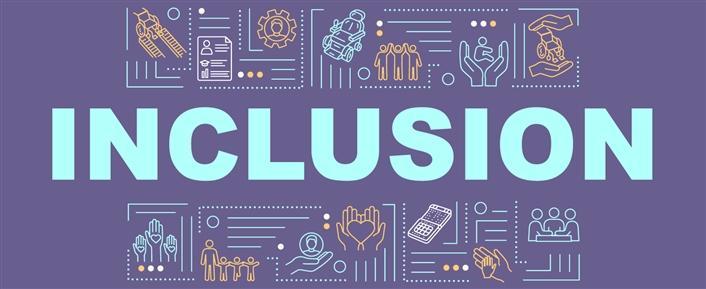Designing Inclusive Curricula: Essential Strategies for Diverse learners
Creating inclusive curricula is now a top priority in education. With classrooms becoming increasingly diverse, educators and curriculum designers must adopt strategies that cater to the needs of every learner. This extensive guide explores the principles and practical approaches to designing curricula that empower students from all backgrounds, abilities, and learning styles.
What Is Inclusive Curriculum Design?
Inclusive curriculum design refers to the development of educational programs, materials, and practices that intentionally address diversity and promote equity. The aim is to ensure that every student—regardless of race,culture,gender,ability,or socioeconomic background—has equal access to meaningful learning experiences and outcomes.
- Diverse learners may include students with learning disabilities,giftedness,varied cultural backgrounds,and different linguistic needs.
- Inclusive curricula recognize and celebrate these differences rather then ignoring or minimizing them.
- Accessibility, versatility, and representation are at the heart of inclusive education and curriculum design.
Why Is Designing Inclusive Curricula Essential?
Embracing inclusivity in curriculum design delivers wide-ranging benefits for students,schools,and society at large.Here’s why it matters:
- Promotes equity and social justice: An inclusive curriculum ensures that all voices, histories, and perspectives are valued.
- Enhances student engagement: when learners see themselves in the curriculum, they are more likely to participate and excel.
- Improves learning outcomes: Tailored strategies meet individual needs, fostering deeper understanding and retention.
- Prepares students for a diverse world: Exposure to varied viewpoints nurtures empathy, adaptability, and global citizenship.
Essential Strategies for Designing Inclusive Curricula
To make curriculum truly inclusive for diverse learners, educators and curriculum designers should implement the following proven strategies:
1.Practice Universal Design for Learning (UDL)
- UDL is a teaching framework that provides multiple means of representation, engagement, and expression.
- Incorporate a variety of materials—text, audio, video, interactive activities—to accommodate different learning styles.
- Give students options for how they demonstrate understanding,such as essays,presentations,or creative projects.
2. Ensure Accessibility
- Design curricula that are accessible to students with disabilities.
- Follow digital accessibility guidelines for online resources.
- include clear fonts, high-contrast visuals, alternative text for images, and captions for videos.
- Provide materials in multiple formats, such as print, digital, and tactile.
3. Incorporate Cultural Responsiveness
- Include diverse perspectives, histories, and achievements in the curriculum.
- Use culturally relevant examples and materials to connect with learners’ backgrounds.
- Regularly review and update content to avoid bias or stereotypes.
4. Scaffold Learning and Differentiate Instruction
- Break complex concepts into manageable steps using scaffolding techniques.
- Provide differentiated tasks based on learners’ abilities and readiness levels.
- Utilize formative assessments to guide instructional adjustments.
5. Create Safe and Inclusive Spaces
- Promote respect and empathy thru clear classroom norms.
- Encourage collaborative learning and peer support activities.
- Make sure students feel heard and valued, particularly those from marginalized groups.
6. Engage Families and Communities
- Seek input from families, community members, and students during curriculum development.
- Address local context while honoring global perspectives.
Benefits of Inclusive Curricula for Diverse Learners
Designing inclusive curricula isn’t just a moral imperative—it results in tangible improvements across the educational spectrum:
- Higher Achievement: Students receive targeted support and opportunities tailored to their strengths.
- Greater Retention: inclusive environments reduce dropout rates and improve attendance.
- Social Development: Exposure to diverse viewpoints nurtures tolerance and teamwork skills.
- personal Growth: Each student gains confidence and a sense of belonging.
Practical Tips for Implementing Inclusive Curricula
Want to put these strategies into practice? Here are easy-to-follow tips for educators and curriculum developers:
- Audit your current curriculum: Check for gaps in representation, accessibility, and flexibility.
- Use person-first language: Refer to students with respect, emphasizing individuality over ability or identity.
- Integrate student choice: let learners select topics, project formats, or reading materials that resonate with their interests.
- leverage technology: Employ assistive tools, learning management systems, and multimedia to enhance access for all learners.
- Seek regular feedback: Encourage students and families to share their experiences and suggestions.
- Foster professional development: Train teachers and staff on inclusive practices and cultural competency.
Case Studies: Real-World Success in Inclusive Curriculum Design
To illustrate the impact of inclusive curriculum strategies, let’s look at two inspiring examples:
1. Inclusive STEM at Greenwood Middle school
- greenwood entirely restructured its science curriculum using UDL principles.
- Lab activities were redesigned with options for visual, auditory, and kinesthetic learners.
- Student science teams included diverse abilities, fostering collaboration and peer mentoring.
- Result: Students with disabilities reported increased confidence, and test scores among English language learners improved by 23%.
2. culturally responsive Literature in oak Valley High
- Oak Valley English teachers audited their reading list, adding novels by authors from underrepresented backgrounds.
- Class discussions explored cultural context, identity, and universal themes.
- Guest speakers from the local community enriched the curriculum with real-life stories.
- Result: Students expressed a higher interest in literature, and overall class participation increased.
First-Hand Experience: Voices from Educators and Learners
The true value of inclusive curricula shines through the experiences of those who use them daily:
“Implementing UDL has been transformative. My students feel empowered to learn in their own way, and our classroom has become a community where every voice is important.”
“When we read books by authors who look like me and talk about experiences I recognize, I feel like my story matters. It makes me want to participate and learn more.”
Conclusion: Committing to Equity in Education
Designing inclusive curricula for diverse learners is an ongoing journey, not a box to be checked. By implementing authentic strategies, embracing flexibility, and valuing all voices, educators create classrooms where every learner can thrive. Whether you are a teacher, administrator, or curriculum developer, the shift toward inclusivity is an investment in brighter, more equitable futures.
As educational landscapes continue to evolve, remaining proactive, reflective, and passionate about inclusive curriculum design is more important than ever. Let’s commit to unlocking every student’s potential—as every learner deserves an education that reflects and respects their unique identity.

